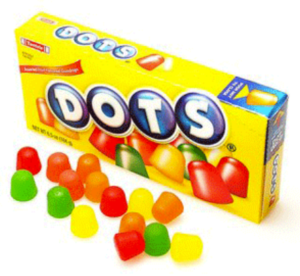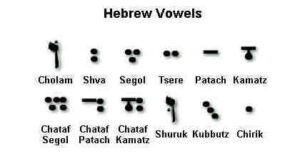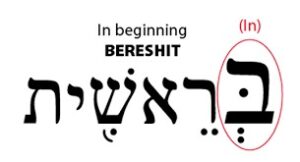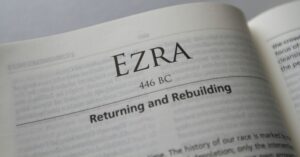Raboyseyee and Ladies,
A big mazel tov to our fiends Bonnie and Heshie Schertz upon the birth of a grandson born to their children Elissa and Adam Kirshner. Welcome to the world Moshe Azarya Kirshner. May you be a source of continuous nachas and joy to your parents, your grandparents, your grandparents, and to your entire extended family.
———————————————————————————————————————
Ezra and His DOTS
The good news: This week’s parsha of Netzovim consists of but 40 pisukim. Accordingly, this week’s review should be much shorter. Newsflash: it’s not! Let us begin.
According to Wikipedia, Dots is a brand of gum drops marketed by Tootsie Roll Industries, which claims that “since its 1945 launch,” the candy has become “America’s…#1 selling gumdrop brand.” The heylige Ois has fond memories of getting and eating DOTS at Shabbis afternoon Pirchei groups, of buying them in the camp canteen and even in the movie theaters. So happens that DOTS are the favorite candy snack of the eishes chayil. The bottom line: kimat everyone loves DOTS. According to advertisements, more than four billion dots are produced from the Tootsie Roll Industries Chicago plant each year. And these fun facts: Dots are vegan, and according to the Tootsie Roll Industries website, they are gluten-free, nut-free, peanut-free, and kosher (officially certified kosher by the OU as of December 1, 2009). And for DOTS aficionados, these additional factoids: Current flavors for “Original Dots” include cherry (red), lemon (yellow), lime (green), orange (orange), and strawberry (pink). Sour Dots have five flavors, but are created with citric acid: cherry, lemon, orange, grape, and green apple. Flavors for Tropical Dots include Island Nectar, Wild Mango, Grapefruit Cooler, Carambola Melon, and Paradise Punch; and for Yogurt Dots, Banana, Orange, Blackberry, and Lemon-Lime.

Ober, we ask azoy: why is the heylige Ois discussing DOTS in the days just before Rosh Hashono? Were DOTS taka introduced in 1945? Not! It appears that DOTS were first introduced by a very good man by the name of Ezra; more on him and when he introduced them, later. We will be discussing DOTS this week because it so happens that dots –a bunch of them- 11 to be precise- make an appearance in this week’s parsha of Netzovim, always read the shabbis just before Rosh Hashono. Shoin, and now you know.
Just last week, the Ois wrote about the k’ri and k’siv where words in the heylige Toirah were mysteriously changed by our sages for one reason or another. One reason given was that the written didn’t pass the smell test of the censors; they wanted more elegant words. This week we shall explore the curious case of dots which appear on top of certain words in our parsha. Among the clutter of vowel points and cantillation marks that accompany the Hebrew text in printed editions of our chumoshim (Bibles), we also -in a number of places- find strange dots that appear above certain words and letters. They are strange because, unlike the vowel points and cantillation marks, they have no effect whatsoever on the way any word is pronounced, read, or chanted. Remove them, and the word is still read and sounded out as intended. And unlike the vowel points and cantillation marks, which originated in early medieval times, these dots appear in all handwritten Toirah scrolls that we read at least three times each week. Our Toirah scrolls date back to antiquity. As an aside, it was Ezra who enacted Toirah reading three times a week. In fact our dots, a whole bunch of them -like eleven of them, uncolored and flavorless, and more than any other parsha- are found atop of a few consecutive words.

Let us read the posik innaveynig (as it appears in the text) and let us please notice in the image below the Hebrew words that are dotted. Says the heylige Toirah (Devorim 29:28) azoy:
| 28. The hidden things belong to the Lord, our G-d, but the revealed things apply to us and to our children forever: that we must fulfill all the words of this Torah. | כחהַנִּ֨סְתָּרֹ֔ת לַֽיהֹוָ֖ה אֱלֹהֵ֑ינוּ וְהַנִּגְלֹ֞ת ֹלָֹ֤נוֹּ ֹוֹּלְֹבָֹנֵֹ֨יֹנֹוּ֨ עַד־עוֹלָ֔ם לַֽעֲשׂ֕וֹת אֶת־כָּל־דִּבְרֵ֖י הַתּוֹרָ֥ה הַזֹּֽאת: |
The key English words, “….but with overt acts, it is for us and our children forever to apply all the provisions of this Teaching.” Check out the dots above the Hebrew letters of the key words. Back to these words soon.

Never seen these dots before? The three words translate as follows: “for us and our children until.” Until meaning forever, the fourth word which is dot-less. And the questions are azoy: what’s up with these dots? Are these the only words with dots in the heylige Toirah? What are they doing here? Who placed them there? And why? And the answer or answers? Great questions and let us share what a few had to say about dots but first, let us absorb this factoid: There are ten places in Toirah where some letters have dots above them. And in case you’re checking up on the Ois, the pisukim are found in: Bereishis (16:5; 18:9; 19:33; 33:4; 37:12). In Bamidbar 3:39; 9:10; 21:30; 29:15. And in Devorim 29:28.
Says Rashi that the above posik contains a second qualification of our collective responsibility. These dots are used in various places in the Toirah and indicate that the words above which they appear must be qualified. In our case, this means that even our collective responsibility for revealed and observable sins is not absolute. It is limited in some way. What is the limitation? Rashi explains that our collective responsibility did not emerge until the nation crossed the Jordan and entered the land of Israel. Once the nation entered the land, the blessings bestowed for observance of the Toirah and the curses that befall us for its abandonment were to be repeated. The people would acknowledge the blessings and curses. With the acknowledgement of these blessings and curses, collective responsibility will emerge.
As to be expected, our tradition provides different explanations for these dots. Lest you think that every letter in the heylige Torah was written in one style, you should be aware that there are sections -meaning letters and words that call out for attention just they are taka different. And when dots do appear, inquiring minds want to know why. As an aside and to look intelligent at the shabbis this, you should take note of this: Dots appearing over words in the heylige Toirah are called puncta extraordinaria (lit. “special dots”), and ancient sofrim (scribes) -so we are told- used them to communicate to later scribes that a given letter should not be copied because it is -or might be- a scribal error. What? The Toirah has errors? OMG! Shoin, I see that you’re about to get confused and mistama you want to know and better understand what’s pshat that ancient scribes put them there to communicate to later scribes that something was epes not in order. So am I! We shall come back to that.
 Among the most famous are the enlarged letter beis (bet) of the first word of the heylige Toirah, B’reishis, (In the beginning), the two enlarged letters of the Sh’ma prayer (Devorim 6:14), the ayin in the word sh’ma, and the daled in the word echad, which remind us not to read this important text incorrectly. Ober what about real dots? Back in Sefer Bereishis (33:4) during the reunion between Yaakov and his long-lost brother of many years, we came across a case of dots above the word וַׄיִּׄשָּׁׄקֵ֑ׄהׄוּׄ, (vayishokeihu), (meaning Eisav kissed Yaakov). Mamish all hell broke loose when our sages took note of the dots above the word and came up with various explanations for their appearance.
Among the most famous are the enlarged letter beis (bet) of the first word of the heylige Toirah, B’reishis, (In the beginning), the two enlarged letters of the Sh’ma prayer (Devorim 6:14), the ayin in the word sh’ma, and the daled in the word echad, which remind us not to read this important text incorrectly. Ober what about real dots? Back in Sefer Bereishis (33:4) during the reunion between Yaakov and his long-lost brother of many years, we came across a case of dots above the word וַׄיִּׄשָּׁׄקֵ֑ׄהׄוּׄ, (vayishokeihu), (meaning Eisav kissed Yaakov). Mamish all hell broke loose when our sages took note of the dots above the word and came up with various explanations for their appearance.

Were the dots there to teach us that Eisav mamish kissed Yaakov with a whole heart? Or, did he perhaps wish to bite him at this fateful reunion? A number of exegetes suggest the dots hint to Eisav’s feelings, or state of mind. The bottom line: their appearance over the word gave our sages grounds to further investigate. We previously covered that kiss and zicher you can find more in the archives at www.Oisvorfer.com.
Ober, what about the dots atop the words in our parsha? Why are they dotted? Says the heylige Gemora (Sanhedrin 43b), azoy: they are understood in relationship to the question. What? In other words, we need to go back, reread the words and then dig deeper. The Toirah told us azoy: “The secret things belong unto the RBSO; but the things that are revealed belong unto us and to our children forever,” Ober, specifically which sins belong to the RBSO? What does that mean? Asks the Gemora azoy? For which sins are the Yiddin to be held accountable? Says Rebbe Yehudah that the Yiddin are only punished for sins they commit in secret after they cross the Jordan and enter land. Reb Nechemiah reads the texts more leniently, concluding that the phrase, “the secrets belong to the RBSO” means that in the past -and forever going forward- the RBSO will never punish the Yiddin for these secret sins. Mamish? Noch a mul (one more time): Reb Yehudah says that the violation of secret sins is punishable once the Yiddin were to enter the land and Reb Nechemia says even upon entry, secret sins are the domain of the RBSO. We don’t get punished if we had no clue we were committing a sin. Vyst zich ois (it appears) that we can commit sins we didn’t know were sins.
Ober let’s get back to pshat? What are these secret sins for which the RBSO may give us a pass? Do we get punished for violating them? Or, does the RBSO give us a pass simply because they were taka secret? And if we did violate them, how were we to know better? Taka great questions! Another question: Are we talking about sins committed in public as opposed to sins committed in private? Says the Sforno azoy: the dotted words are related to the pisukim discussing punishment, and in particular the “terrible Divine retribution mentioned in the preceding verses.” They are concerned with drawing a distinction between those sins for which a human court should exact punishment and those for which the punishment remains in the RBSO’s hands. Violations that take place in public are understood to have an impact on the community, and are different from when a man sins in private. And says the Ishbitzer (Rabbi Mordechai Yosef of Ishbitz), azoy: “when a man transgresses in secret, and it is not known to anyone else, his sin is not pertinent to the whole community of Israel, but it is rather of the secret things that belong to the RBSO our G-d,” (and He decides how to deal with that individual). We can all chap that public sins are different, influencing as they do, public culture, norms, and expectations. As an aside, chapping in public, if you chap, is not good.
Ober says the medrish (Bamidbar Rabbah 3:13) that pshat is azoy: the dots mean that in the future the RBSO will reveal the secrets of the dotted words which the text tells us, belong to Him forever. In other words, the dots are like a crossing out or a refutation of the text. They tell us that these words require further attention and mean something else, something different than the plain meaning of the text. Another medrish (Tzenah Ur’enah) suggests that the secret things are those mitzvis whose reason is not understood by us; we do not know why the RBSO commanded us to do them. The posik says: ‘The secret things belong to the Lord; we should do those ‘secret’ commandments for the RBSO’s sake, simply because He so commanded us. And the revealed ones belong to us and to our children; this refers to those commandments whose reason is stated openly and can be understood. We are obligated to pass down this explanation to our children so that they can understand it as well. Yet another source says azoy: “rabbinic culture retains the memory of a period during which the Toirah was written down not under divine dictation, when significant errors may have crept in. In other words: while exiled following the destruction of the first Temple, the Toirah was lost. Older scrolls, those dating back to when the first scroll were written, were all gone. Only after the return from exile in 538 BCE, did Ezra Hasoifer (the scribe) pull the fractured Jewish tradition together as best he could, redacting the Toirah text, but not completely accurately.” Well, blow me down!

And why are there dots over all certain words? In plain English: he wasn’t sure if the words read correctly. What to do? Says the medrish (Avos D’Rebbi Noson, v. 2, ch. 37), he dotted them so that readers would stop and try to figure things out. When asked why he dotted certain words, Ezra said the following: “If Eliyahu Hanovee (Elijah) comes and says to me, why did you write this? I shall say to him, I made marks over them. And if he says to me, You wrote it well, I shall take the marks off them.” And the bottom line is this: when dots appear, they need to be examined. Dots are like pimples. What caused them? Was it something you ate? Or stam azoy, acne related? There is a considerable body of literature on the use of dots in the heylige Toirah. Says the heylige Gemora (Yerushalmi Pesochim 9:20, azoy: The Sages say, when there are more [undotted] letters than dots [dotted letters], expound upon the letters and don’t read the dots, and when there are more dots than letters, expound the dots and don’t read the letters. Rebbe says, even when there is only one dot above them, expound the dot and don’t read the letters. And say the medrish (Bereishis Rabba 48 –16, ויאמרו אליו), Rebbe Shimon ben Elazar says, any place you find more letters than dots, you expound the letters; more dots than letters, you expound the dots. The dots tell you there’s something going on.
Though each exegete brings their own flavor on exactly what the dots tell us, our sages seemingly all agree on this one item. The dots -sometimes- indicate that the words or letters marked by them are considered to be of doubtful provenance and may not belong in the text. Ober, asks the heylige Ois in the days before Rosh Hashono, azoy: having grown up in the yeshiva world where the rebbe convinced us -mostly by beating us mercilessly with his stick- that every last word in the heylige Toirah was God-given at Matan Toirah (Sinai), how is it shayich (remotely possible) that some words are not? The Ois remains shocked to learn of biblical pisukim that were thought in ancient times to contain possible scribal errors; say it’s not so please, but is it? Ober as we just read, a rabbinic legend -our man Ezra- loved by all, and certainly by the RBSO- found a number of questionable words? Oy vey! On the other hand, all seemingly agree that it was Ezra who according to rabbinic tradition, was the canonical Toirah scribe who placed these dots because he wasn’t sure. The bottom line: Ezra inserted them not because he was certain that the words or letters beneath them were spurious—chas v’sholom (heaven forbid). Had that been the case, he wouldn’t have included them; but davka because he wasn’t certain and wanted to make that clear.
The final bottom lines: According to Ezra, it is not certain whether the words indicated by dots should be included in the Toirah text. Only Elijah, when he arrives, will be able to state whether they are needed. Our sages also tell us azoy: Ezra was worthy of being the vehicle of the Toirah had it not been already given through Moishe. At some point, the heylige Toirah was forgotten, but Ezra restored it. Were it not for its sins, the Yiddin, in the time of Ezra would have witnessed miracles as in the time of Yehoishuah. Ezra was the man!
Finally, As Rosh Hashono and Yom Kippur approach, one could try convincing the RBSO that one is innocent because one did not know that he was committing a sin. One can argue that’s he interprets the dots. Ober the Ois is here to tell you that it won’t work. Let’s get real: you all know just what you did and also avada know that it was wrong. It may have been a secret between you and the person you committed the sin with, but it’s highly unlikely that your defense will win the day. Guilty as charged. The good news: it appears from other teachings that Yom Kippur was designed to specifically wipe away the stains, if you chap, of those secret sins. Boruch Hashem (thank the RBSO!)
A gittin Shabbis-
The Heylige Oisvorfer Ruv
Yitz Grossman
